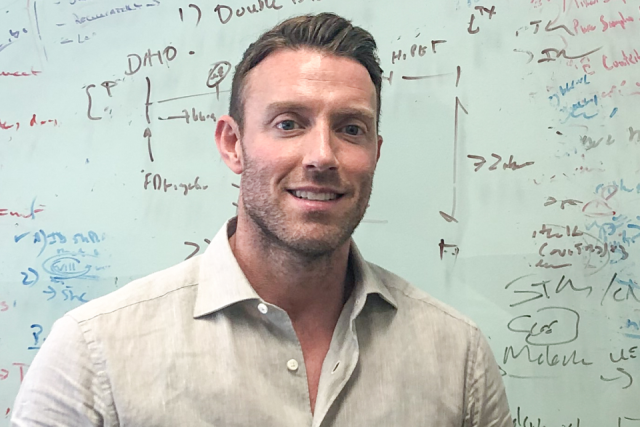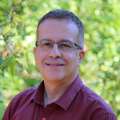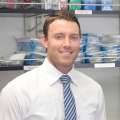When a neurosurgeon looks at a glioblastoma, an aggressive form of brain cancer, she sees a dark mass bullying its way through the brain. When an oncologist talks to a patient with glioblastoma, he tempers expectations, talking in months rather than years. When a molecular biologist thinks about glioblastoma, she thinks about the tumor’s sweet tooth — the sugar it consumes to fuel its frenetic growth. And when you put all these people together — you get a plan to fight cancer.
Armed with new research tools and a grant from the David Geffen School of Medicine’s new Seed Grant Program, a team of UCLA researchers, including neurosurgeons, neuro-oncologists, molecular biologists, and pharmacologists, is now studying how the metabolism traits of glioblastomas may represent a weak spot in the cancer. These grants, which are in their first year, give interdisciplinary groups of UCLA researchers funding to pursue new projects.
“Often when I sit in a room with other neurosurgeons, we all come up with the same ideas,” said Dr. Linda Liau, chair of neurosurgery and director of the UCLA Brain Tumor Program. “But sitting in a room with people who are thinking about metabolism and protein structure and signaling pathways, we come up with much more innovative concepts and treatment ideas.”
The combination of ideas developed by an interdisciplinary group of thinkers is why Dr. Orian Shirihai came up with the new Fusion Award, which provides funds for research that fits with the medical school’s metabolism theme. Metabolism is one of six research areas established in early 2017 to increase the impact of basic, translational clinical and community research at UCLA in high-priority and broadly defined biomedical research areas.
Shirihai is chair of the metabolism theme. The idea behind creating the themes was to establish multidisciplinary teams that would as result of having different types of expertise develop innovative thinking that would hopefully lead to groundbreaking discoveries. The Fusion award emphasizes complementary and synergistic aspects of collaboration.
Malignant gliomas, including an aggressive type known as glioblastoma, are the most common primary brain tumors. People with this type of tumor live an average of 14 months after diagnosis; surgery, radiation and chemotherapy add only a few months to their survival. While targeted drugs that shrink tumors by taking advantage of their molecular characteristics are beginning to be prescribed for other cancer types, research on gliomas is lagging behind.
That lag, said David Nathanson, the principal investigator of the Fusion Grant project, is in part due to the difficulty in studying glioma cells in the lab. Researchers have typically isolated glioma cells from patients’ tumors, then put the cells into a Petri dish to probe how they grow. But the cancer cells, Nathanson said, behave much differently in a dish than in a brain.
“It’s like studying a lion in a zoo instead of in the Serengeti; you’re studying it in an environment that’s not normal,” he said.
After conversations with colleagues, Nathanson had a plan to study human gliomas and their metabolism in a more natural environment: mouse brains. Nathanson, Liau, who is co-investigator on the Fusion Award research project, and their colleagues had already been discussing a project on gliomas, but hadn’t been able to find a source of funding.
Their idea fit perfectly with the seed grant program, which centers on six themes: cancer; cardiovascular; immunity, inflammation, infection and transplantation; metabolism; neuroscience; and regenerative medicine. The glioma research in fact drew on three of the themes — cancer, metabolism and neuroscience. In June, the team found out they’d won the 2017 Metabolism Theme Fusion Award of $200,000.
With that funding, the team is using what they have termed GliomaPDOX, a model system that lets them grow gliomas from human patient tissue inside of mice brains, to study the cancer.
When Liau and her neurosurgery colleagues operate on a glioma patient who has agreed to join the study, they set aside a small sample of the tumor, which is quickly transferred to the lab. There, the cells are implanted into the mice. Once the cells have grown and divided there, Nathanson and other researchers — including Dr. Timothy Cloughesy, clinical professor and director of the UCLA Neuro-Oncology program and Tom Graeber and Daniel Braas, both professors of molecular and medical pharmacology — can study how the tumors metabolize nutrients.
Each mouse is like a personalized model of one patient’s tumor, so results in mice can be cross-checked with how well a person responds to different treatments or how quickly their glioma grows. “We’re trying to mimic that natural environment as best we can,” Nathanson said.
The researchers are particularly interested in whether the metabolism of tumors — as shown in the mice — can predict whether people respond to certain drugs. Changing the way the tumors can process sugar and other nutrients, they hypothesize, might weaken gliomas so that other drugs can shrink them.
The team also will be studying PET scans — which help them visualize metabolism — of people with gliomas.
“There’s tremendous value in making measurements in both a model system and in patients,” Nathanson said. “Ultimately, we’re not trying to cure cancer in a dish; we’re trying to cure cancer in a patient.”
The combined approach, Liau said, could reveal a subset of people whose tumors have unique metabolic properties that can be targeted with drugs. The mice will help the researchers test those drugs in more realistic conditions than a Petri dish.
“This project is very complex, which is why it’s critical that we involve different disciplines,” Liau said. It requires coordination between surgical teams, different groups of researchers, and clinical oncologists, who make sure the research results are used to improve patient care.
While they were not awarded the Fusion grants, two other projects that required the assembling of a group of labs and continue to work toward funding their projects included teams led by Andrea Hevener, a professor of medicine in the division of endocrinology and diabetes at the UCLA David Geffen School of Medicine, for a project titled “Mitochondrial Dynamics in Metabolic Health and Disease,” and Adriana Huertas-Vazquez, an assistant professor in the Geffen School of Medicine, for a project titled “Elucidating the Role of Mitochondrial Genes and Plasma Biomarkers in Steatohepatitis.”
Learn more about the metabolism research theme at UCLA.






